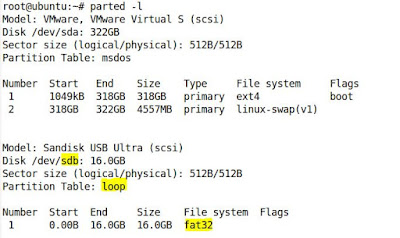Where is BIOS Stored?
From the Wikipedia
Article on BIOS:
BIOS software is
stored on a non-volatile ROM chip on the motherboard. In modern computer
systems, the BIOS contents are stored on a flash memory chip so that the
contents can be rewritten without removing the chip from the motherboard. This
allows BIOS software to be easily upgraded to add new features or fix bugs, but
can make the computer vulnerable to BIOS rootkits.
ROM is read only, so why can the BIOS contents be
rewritten? Does the “flash memory chip” mean the same thing as the
“non-volatile ROM”, both meaning where BIOS is stored?
SuperUser
contributor Varaquilex has the answer for us:
ROM is read only, so
why can the BIOS contents be rewritten?
The BIOS program
itself is stored in an EEPROM (which can be [E]lectrically [E]rasable and
[P]rogrammable [R]ead [O]nly [M]emory) or flash-memory. So the read-only here
is about the chip being non-volatile. The contents of the memory stays when the
power is cut off, unlike volatile RAM. The ROM being EEP means that the BIOS
can be re-written or updated. For such operations in the past, you had to
remove the BIOS chip from the board, put a new one in (if it was not PROM or
EPROM), or if it was EPROM, you had to get it to the manufacturer and let them
re-program the chip, then re-attach it to the board. After current advances,
thanks to EEPROMs, you do not have to remove chip to do such operations, you
just make the computer do the job electrically.
Does the “flash
memory chip” mean the same as the “non-volatile ROM”, both meaning where BIOS
is stored?
from Wikipedia:
Flash memory is an
electronic non-volatile computer storage medium that can be electrically erased
and reprogrammed.
Flash memory was
developed from EEPROM (electrically erasable programmable read-only memory).
There are two main types of flash memory, which are named after the NAND and
NOR logic gates. The internal characteristics of the individual flash memory
cells exhibit characteristics similar to those of the corresponding gates.
Whereas EPROMs had to be completely erased before being rewritten, NAND type
flash memory may be written and read in blocks (or pages) which are generally
much smaller than the entire device. NOR type flash allows a single machine
word (byte) to be written—to an erased location—or read independently.
EEPROM and flash
memory do not refer to same thing. They are two similar memory types as one is
developed from the other, and contain different types/configurations of MOS
transistors. However, they are the memory where the BIOS program resides.
To address another
misconception, mentioning this CMOS-BIOS relationship:
The BIOS settings
are stored in the CMOS chip (which is kept powered up via the battery on the
motherboard). That is why the BIOS is reset when you remove the battery and
re-attach it. The same program runs, but the settings are defaulted. See this
answer for a detailed view of memories used during the booting process.
To extend the
CMOS-BIOS topic, thanks to @Andon M. Coleman, adding his comment to the
answer:
It is worth
mentioning that the BIOS settings do not have to be stored in volatile CMOS
memory. There are plenty of embedded systems that store their settings in
NVRAM. The only reason PCs have gotten away with using volatile CMOS all these
years is that they already had a battery to keep the internal real-time clock
ticking while the power is off (recall that when you pressed the power switch
on a PC-AT, it literally cut all power off to the motherboard). This meant that
cheaper volatile memory could be used to store system settings. So it is mostly
for historical purposes.




Comments
Post a Comment